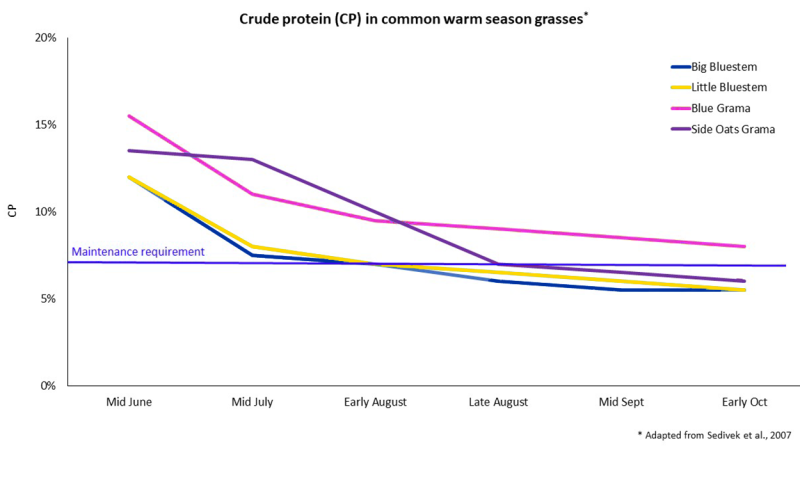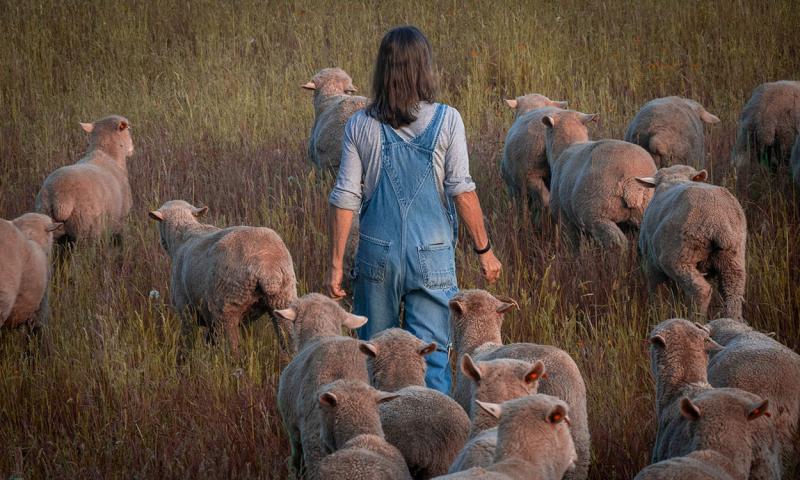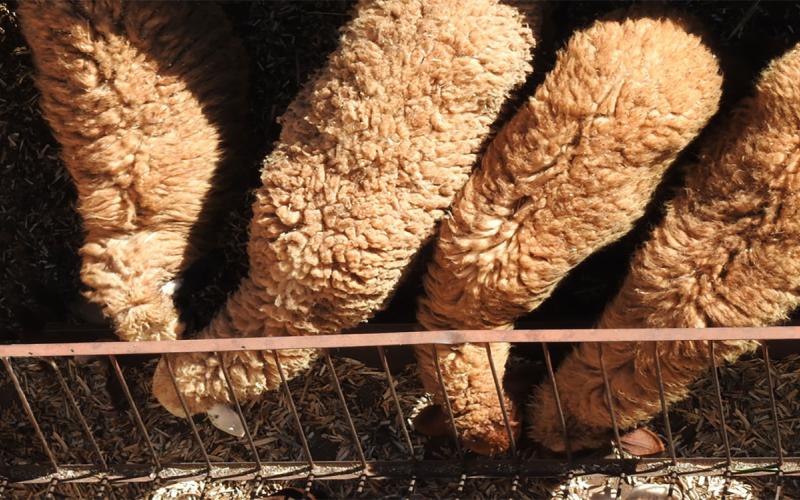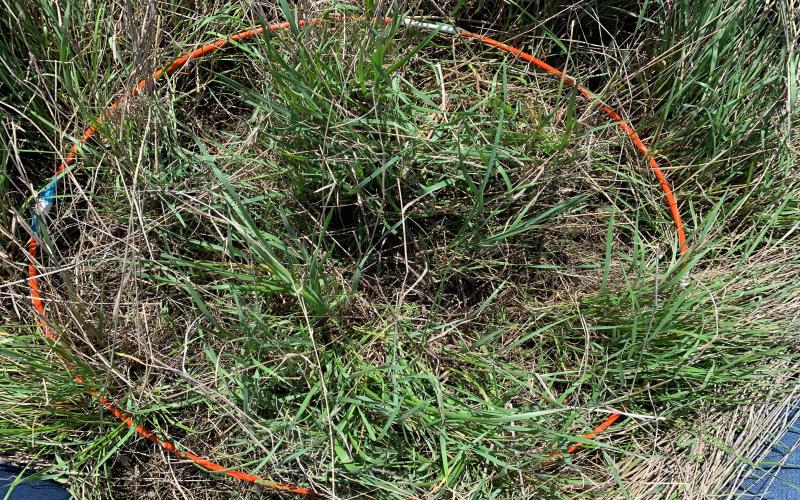Sheep can readily thrive on pasture in the summer. However, monitoring forage quality and meeting mineral requirements on range is important to optimize production.
Forage Composition
Forage composition within pastures is an indicator of nutrient content. With warmer temperatures, grass species shift from cool-season grasses (for example, crested wheatgrass, smooth brome, and western wheatgrass) to wam-season grasses (examples includ little and big bluestem, blue grama, and sideoats grama). Most cool-season grasses will fall below protein requirements by late July. In contrast, warm-season grasses meet minimum protein requirements for non-lactating, open ewes into late August (Figure 1).

Blue grama maintains 8% protein into early October. In terms of energy, many grasses continue to meet ewe requirements up to gestation, even when grasses mature, but they become higher in fiber and more difficut to breakdown by rumen microbes. While grasses rapidly decline in overall nutrative value, forbs and browse species maintain higher protein, energy, and mineral content into the fall.
Knowing Your Pastures
Take a quick survey of your pastures. Is there a variety of plant species? This important for both rangeland health and forage production. Are specific plants being targeted by your sheep? It is important to know what species you have present in your pastures, so you can “work with what you have, and manage for what you want.” This requires monitoring, which is essentially developing a database of your operation, including your pastures. Monitoring doesn’t have to be complicated. It can be a note in your phone or a Google spreadsheet you can easily access. You can use photopoints and observations, or you can develop a more-advanced monitoring plan that includes clipping forage. Our article, You Can’t Manage What You Don’t Measure: Range Record Keeping, highlights more information on monitoring.
Forage Samples
Part of a monitoring program may include taking forage samples to test for nutritional value as well as mineral content. Connect with your local NRCS Service Center or SDSU Extension office for advice on how to do this and what lab to send the samples to. You can sample grasses and “weeds” separately.
Mineral Supplementation in Summer

In general, grazing will meet mineral needs for dry ewes, and strategic mineral supplementation can help reduce input costs. However, the presence of certain plants can also be an indicator of pasture mineral status. Forbs will sequester minerals that are low in the soil. Leafy spurge, for example, is high in calcium (abbreviated as Ca), because it has adapted to hold onto calcium when it is low in the soil. Minerals that are high in plants, such as leafy spurge, but low in the grasses, indicate soil mineral deficiencies. The exemption to this rule is sodium, because plants that thrive in high sodium soils also take up high levels of sodium.
Minerals play many integral roles in production, so when in doubt, provide free-choice mineral and salt. Grazing ewes will consume 1.5 times more free-choice mineral, while also selecting for more nutrient-dense portions of plants. If ewes are grazing while bred or lactating, supplementing minerals becomes significantly more important. Offering excess minerals provides minimal benefit, but even subclinical mineral deficiencies lead to lower production efficiencies.
Summary
Most of South Dakota’s rangelands are sufficient for dry ewes throughout summer. Grass-dominated pastures meet requirements until August, but may require protein supplementation into the fall and winter. Ensuring adequate mineral status supports many biological functions. While ewes are in maintenance, pastures may meet mineral needs. Evaluating your pastures visually or through testing allows you to know where shortfalls are occurring. Grazing is a great opportunity to reduce feed costs and capitalize on what ruminants do best—turning forage into high-quality food and fiber. However, it is important that the nutritional requirements of the flock are met all year to optimize production and promote profitability.

